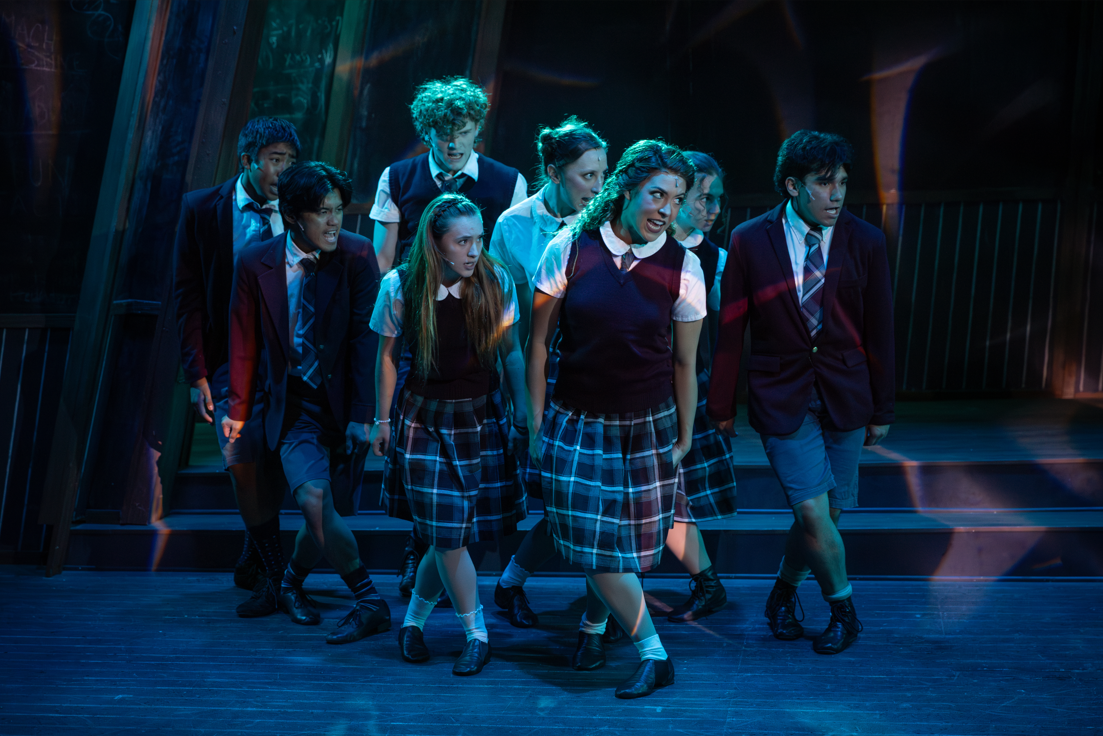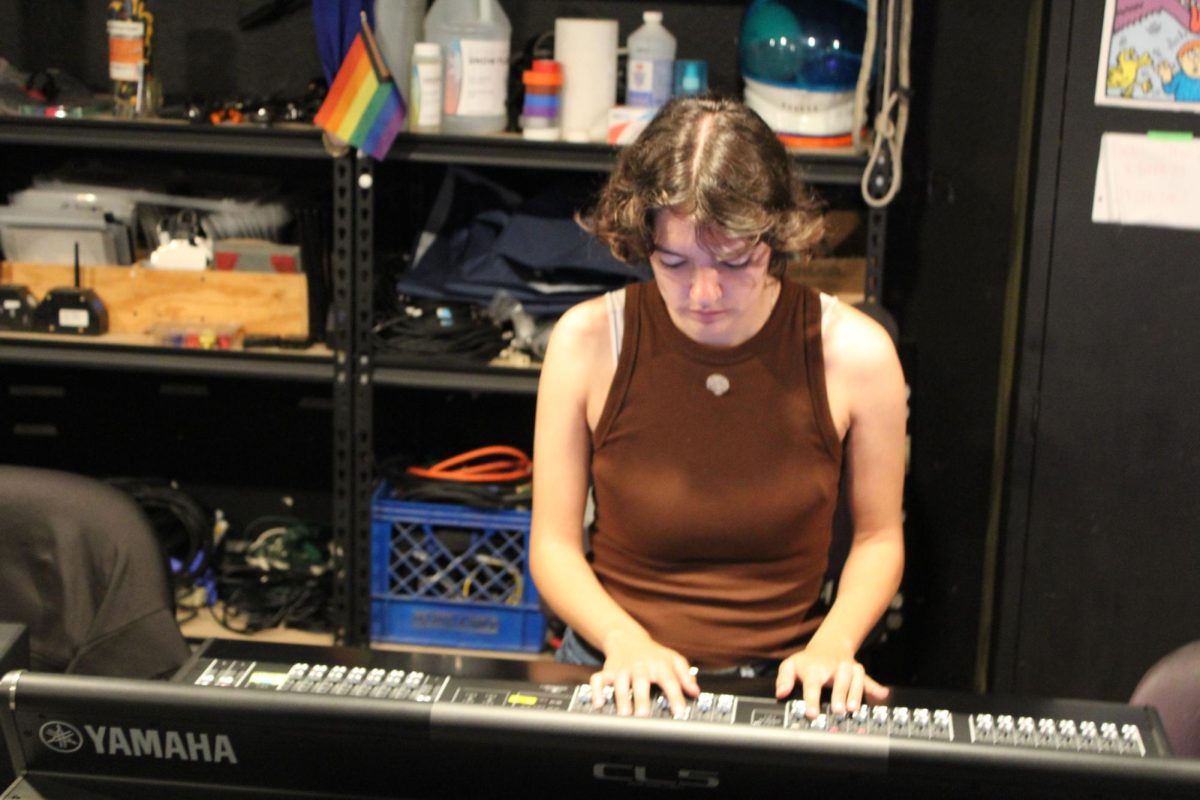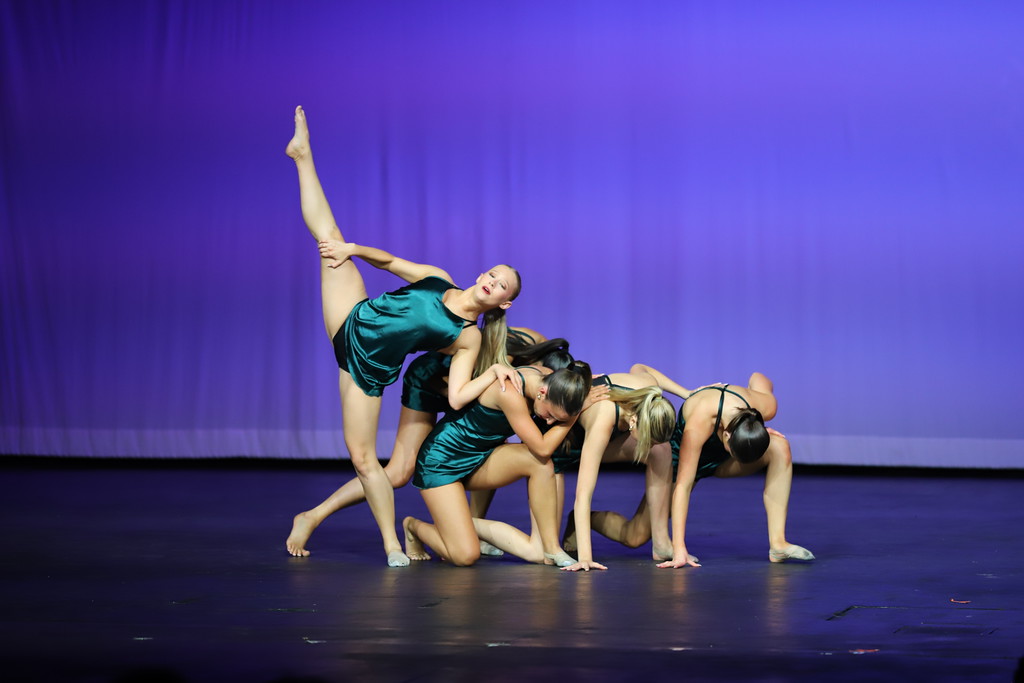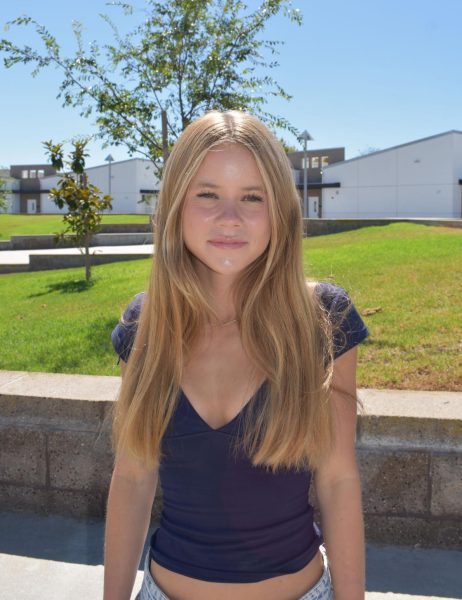Sophia Tran (9) held the head of the lion costume up, Feb. 11, as the person behind her held onto her belt and supported her movements. They were performing a traditional lion dance for the Lunar New Year celebration at her Buddhist temple in Santee. Facing the kids in the crowd, she moved the lion’s head to make it appear as if the lion was observing them, and a few curious onlookers petted the lion in response.
Sophia performed at Westview with two other Westview students, Kadence Ly (11) and her sister, Mia Tran (12), as well as others from different schools from their Lion Dancing organization, Gia đình Phật tử. for Westview’s Lunar New Year Celebration at lunch, Feb. 9. Sophia says it was really exciting to see how hyped the crowd was at Westview and how many people were there to watch.
“When I would step in for my part for dancing, I would hear people speaking my name and that felt really cool,” Sophia said. “. [Afterwards,] a lot of people came up to me and they were like, ‘I never knew you did that.’ That’s just a side of me that they never saw. People were congratulating us on doing well. I’m glad that they were interested in something that we love so much.”
The group performs at many places besides high schools and temples, though they do many temple openings and ceremonies. They even perform at the openings of stores to bless the businesses with good fortune. Sophia has also performed at Challenger Middle School in Mira Mesa, where she was again surprised at people’s appreciation for her dancing.
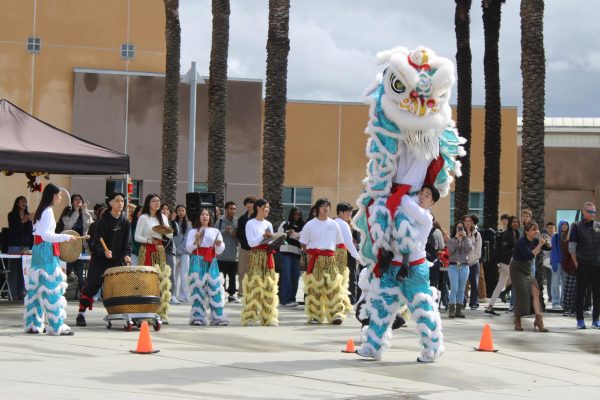
“Afterwards, a bunch of kids came up to me, and they made handmade flowers for me because they liked my style of dancing,” she said. “I never expected people to like my dancing because we have older kids in the group and they’ve had more experience, but it was just really rewarding for me to feel acknowledged in that sense.”
Sophia’s position is primarily at the head of the dragon, or at the cymbals when she needs a break.
“The head is harder to replicate because you have to have the ability to incorporate small movements and make it look realistic,” Sophia said. “The back person [the tail] is usually the person that’s able to support the other person because they’re holding to their belt the entire time, and if we do jumps, that person pulls back and helps them balance and then the head person has to have a lot of upper-arm strength and stamina because it’s really hot in there and heavy.
Sophia has been watching lion dancing ever since she was young. A lot of her male cousins and uncles have lion danced. Sophia says that she sees value in being able to participate in this activity with her sister.
“All of the male members of our family have done it, which is why it’s so cool for Mia and me to be able to experience that, because usually, lion dancing is such a male-dominated thing,” Sophia said. “But, in recent years, coming back to temple, it’s really cool for them to be able to let us dance because I didn’t expect that. Usually, the guys do it because they have bigger muscles. But they took time to teach us and that’s really cool.”
After COVID, the sisters said they felt that it was their time to take over the tradition. Sophia says she found it a great honor that the year of the dragon and more inclusion in their team have coincided.
“I really enjoyed how diverse this hobby has become,” Sophia said. “[With it being the New Year], it’s such a great opportunity for us to be able to incorporate more genders into Lion Dancing and also be able to bring our sport into a more Westernized community.”
Watching it as a young kid, Sophia was afraid of lion dancing because of its sheer magnitude. She used to believe that the lion was actually alive. But after she started doing it, she saw how important it was to her Vietnamese culture. She said she loves feeling like she has inspired and surprised others with this intrinsic part of her culture. Last New Year, the group danced at a nursing home, and Sophia was touched by the reactions of the seniors living there.
“A lot of them started crying because they had never seen this side of our culture,” she said. “It was cool because usually we perform in temples, so people are kind of used to it. I was just so glad to see old people getting to have an enjoyable moment. It was just really fun because they would come up to us afterward and thank us.”



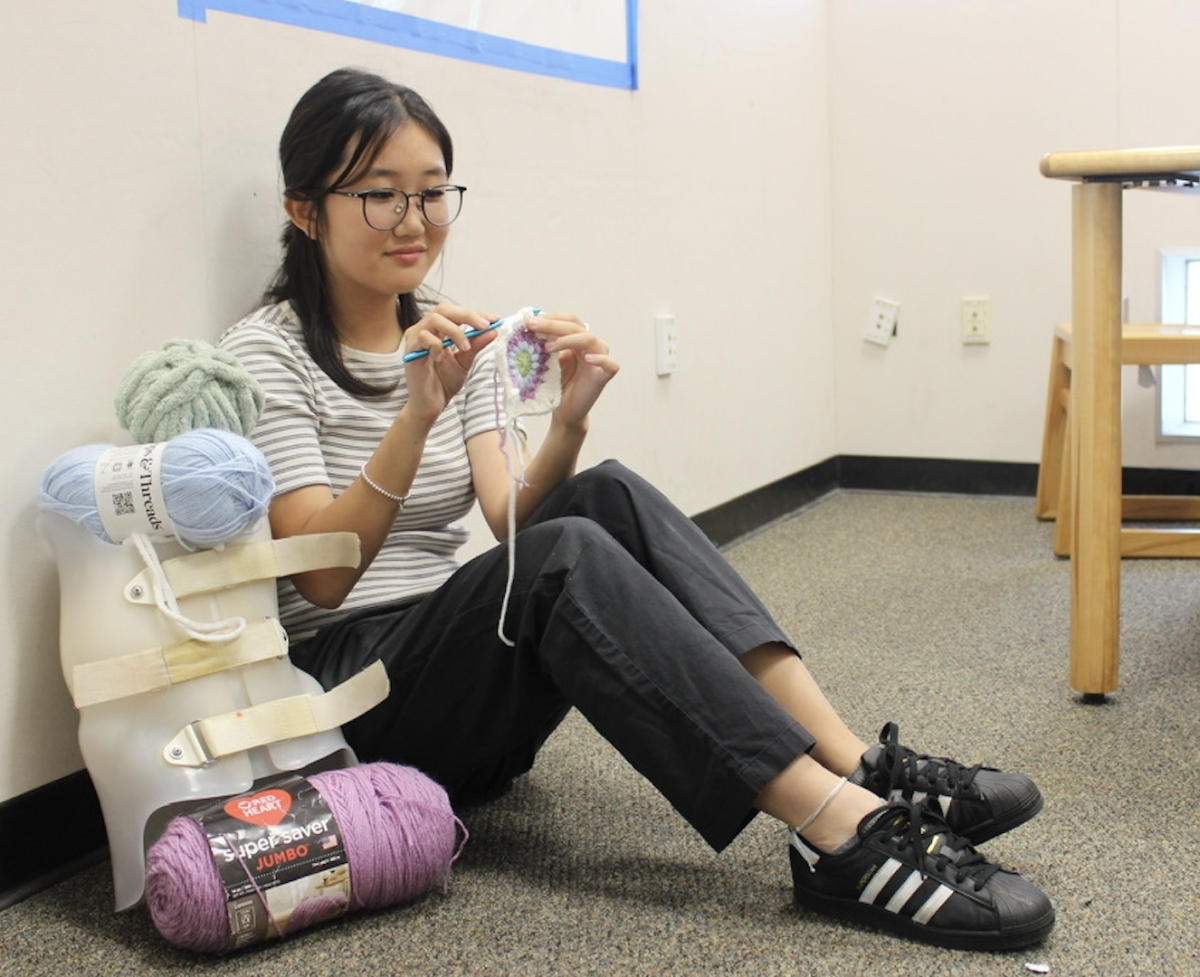
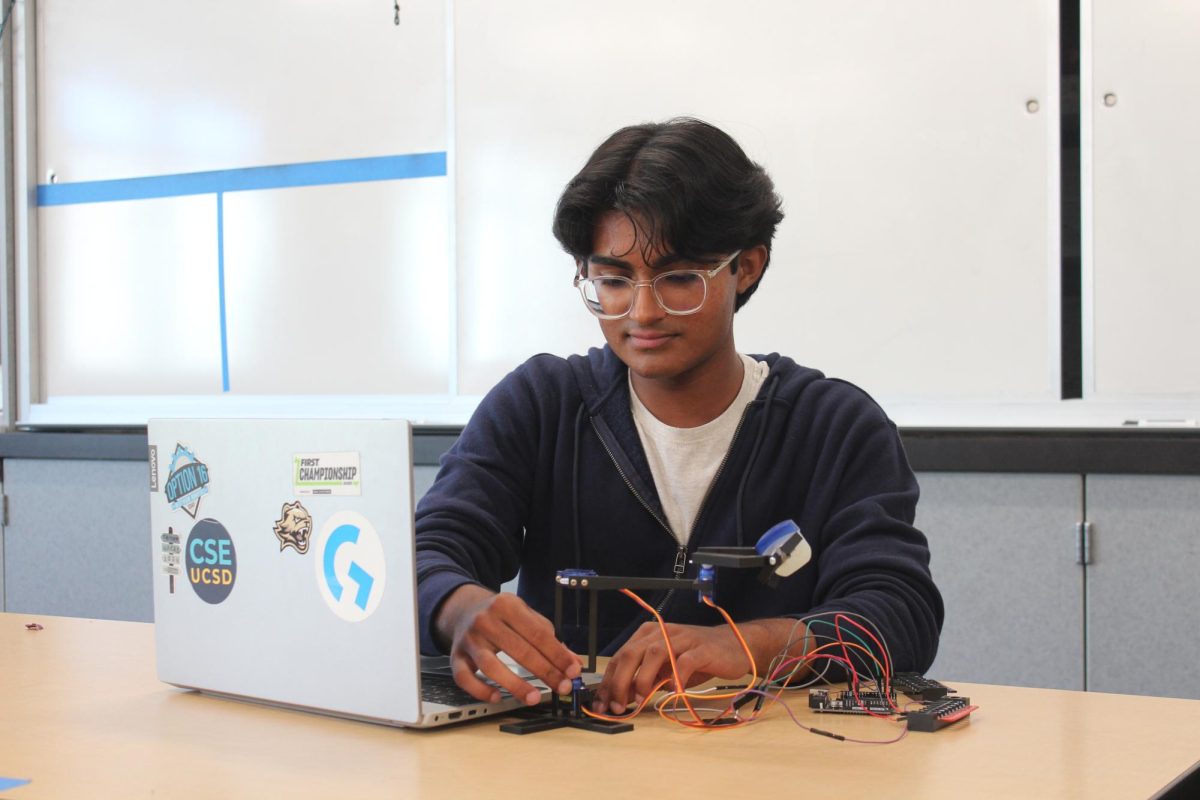

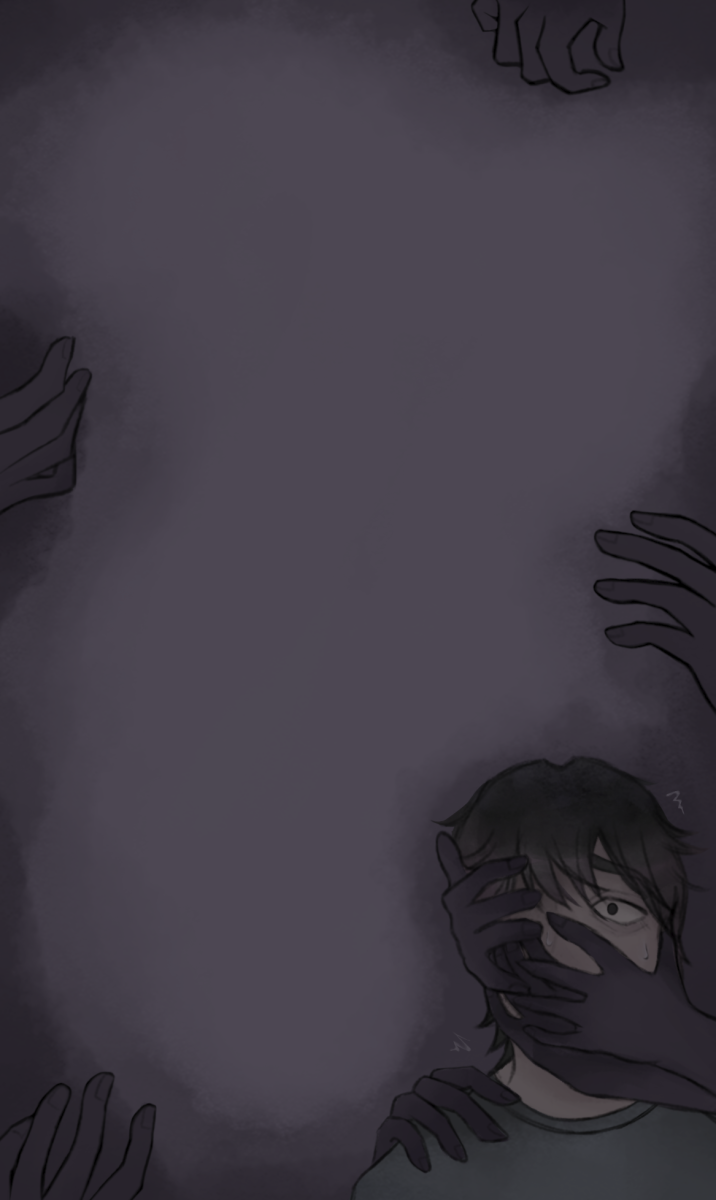


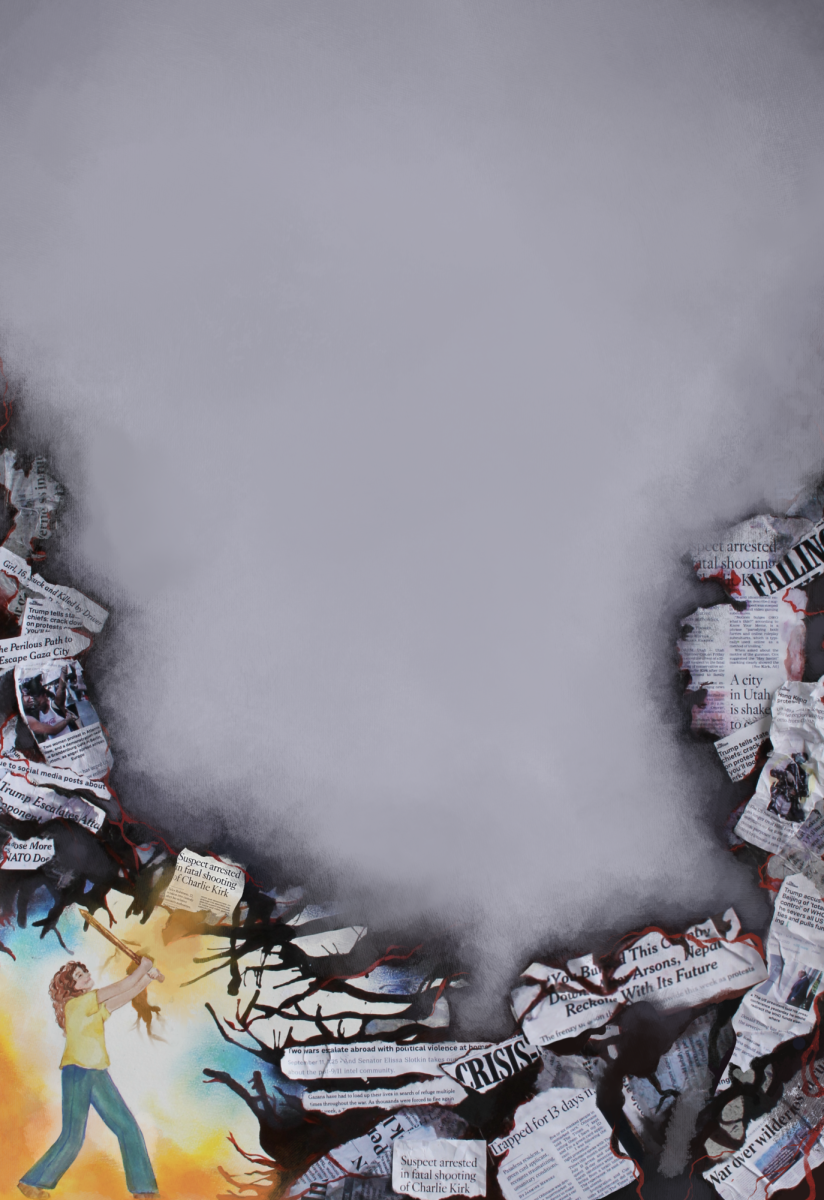
![Jolie Baylon (12), Stella Phelan (12), Danica Reed (11), and Julianne Diaz (11) [left to right] stunt with clinic participants at halftime, Sept. 5. Sixty elementary- and middle-schoolers performed.](https://wvnexus.org/wp-content/uploads/2025/09/IMG_1948-800x1200.png)
